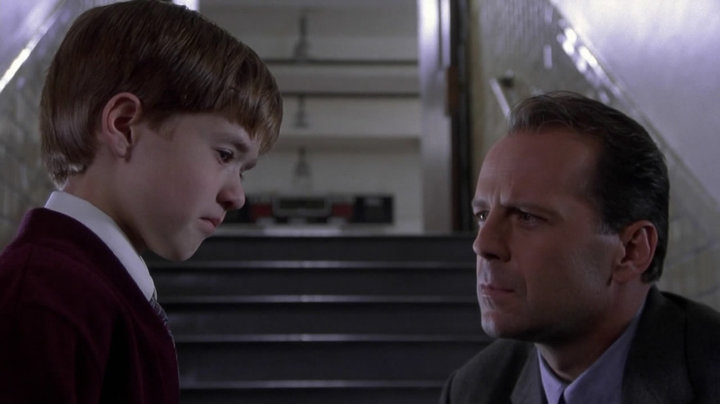
Table of Contents
Movies & TV- In a world oversaturated with predictable plots and formulaic entertainment, it takes something truly exceptional to leave a viewer stunned, breathless, and utterly speechless. The best storylines don’t merely entertain — they penetrate the soul, upend expectations, and echo in the minds of audiences long after the final credits roll. These narratives defy convention, twist reality, and elevate the art of storytelling to breathtaking heights. Whether through psychological intrigue, emotional devastation, or ingenious plot architecture, these works possess the rare ability to disrupt complacency and ignite profound reflection. Here are seven of the most unforgettable screen stories ever told — truly, 7 Incredible Movies & TV Storylines That Will Leave You Speechless.
1. Breaking Bad – The Evolution of Walter White

A Descent into Moral Ambiguity
At its core, 1. Breaking Bad – The Evolution of Walter White is not merely a chronicle of criminal enterprise. It is a meticulous psychological case study—a portrait of corrosion masked as transformation. Walter White begins as a nondescript high school chemistry teacher, a man seemingly shackled by mediocrity, terminal illness, and financial despair. But what unfolds over five riveting seasons is nothing short of a Shakespearean descent, where ambition eclipses morality and power seduces the frail human spirit.
Walter’s journey is a slow, deliberate unraveling. Diagnosed with terminal lung cancer, he initially turns to manufacturing methamphetamine to secure his family’s future. Yet, beneath this noble facade lies a man long embittered by his own unfulfilled potential. His transformation is both horrifying and fascinating. Each decision—each act of violence and manipulation—etches away at the man he once was.
From Mr. Chips to Scarface
The showrunner, Vince Gilligan, famously described the character arc as turning “Mr. Chips into Scarface.” It is an evolution not catalyzed by circumstance alone, but by suppressed ego, latent pride, and a thirst for dominion. The narrative is replete with moral fissures. Walter becomes Heisenberg—a persona that is not an alias, but an embodiment of his true self, long dormant and now unshackled.
Iconic scenes underscore this metamorphosis. “I am the one who knocks” is not merely bravado; it’s a chilling affirmation of identity. The timid schoolteacher has now mutated into a criminal mastermind whose machinations stretch across the Southwest and beyond. His need for control becomes pathological, his lies layered and labyrinthine. He poisons, manipulates, and betrays with icy precision.
Collateral Damage and Psychological Wreckage
Jesse Pinkman—his former student turned business partner—bears the deepest scars. Walter treats Jesse as a pawn, oscillating between fatherly affection and brutal exploitation. Skyler, Walter’s wife, spirals into disillusionment as her domestic life becomes a smokescreen for empire-building. His son, Flynn, remains blissfully unaware of the depth of his father’s duality—until it’s too late.
Each episode of 1. Breaking Bad – The Evolution of Walter White dissects the cost of ambition without ethics. The cinematography, color symbolism, and parallel arcs deepen the narrative’s richness. Albuquerque’s stark desert landscape becomes a silent witness to Walter’s moral erosion.
Legacy and Cultural Reverberations
What makes this story so spellbinding is not just its intensity, but its plausibility. Walter White is everyman turned myth, a symbol of latent darkness nurtured by desperation and unchecked pride. His legacy is not just a fictional construct—it’s a mirror reflecting uncomfortable truths about power, identity, and the human condition.
1. Breaking Bad – The Evolution of Walter White remains a high watermark in television history—a parable for the modern age, crafted with precision, intellect, and emotional gravity. It doesn’t ask for forgiveness; it demands reflection.
2. The Sixth Sense – A Cinematic Sleight of Hand

The Subtle Art of Deception
2. The Sixth Sense – A Cinematic Sleight of Hand stands as a masterclass in narrative misdirection and emotional resonance. When M. Night Shyamalan unveiled this haunting thriller in 1999, it redefined the parameters of psychological storytelling in cinema. What appeared at first glance to be a straightforward ghost story unraveled into something far more intricate—a tale of grief, connection, and revelation veiled in cinematic illusion.
The film centers around Dr. Malcolm Crowe, a child psychologist portrayed with stoic warmth by Bruce Willis. His latest patient, Cole Sear, played by a precocious Haley Joel Osment, is a young boy tormented by apparitions. Cole’s chilling admission—“I see dead people”—became an iconic line, embedding itself in pop culture while hinting at the film’s hidden truths.
A Puzzle Hiding in Plain Sight
What makes 2. The Sixth Sense – A Cinematic Sleight of Hand so unforgettable is its unapologetic reliance on the intelligence of its audience. Every frame, every line of dialogue, every lingering glance is a cog in a machine of meticulous misdirection. Shyamalan doesn’t cheat; he merely reframes. The twist—now legendary—does not spring from left field. Rather, it was always there, hovering like a phantom in the margins.
The viewer, lulled by the somber tone and intimate performances, never suspects that Dr. Crowe is, in fact, deceased. The film’s genius lies in its restraint. It never announces the deception. Instead, it cloaks the truth in mundane interactions, muted colors, and a melancholic score that hums with quiet dread. Upon second viewing, the entire narrative reconfigures itself. Moments once dismissed as inconsequential now seethe with subtext.
Elegy and Redemption
At its heart, this is not merely a ghost story. It is an elegy to unresolved trauma, to the weight of unfinished business, and the redemptive power of acknowledgment. Cole is not just a frightened child; he is a conduit for reconciliation between the living and the dead. His journey toward acceptance mirrors Malcolm’s own arc—though one culminates in growth and the other in departure.
The emotional climax of 2. The Sixth Sense – A Cinematic Sleight of Hand comes not with fright but with stillness. When Malcolm realizes the truth about his existence, the twist does not explode—it breathes. It is sorrowful, tender, and inevitable. It transforms what could have been a mere gimmick into something spiritually profound.
A Legacy Etched in Celluloid
The film’s impact was seismic. It redefined the modern twist ending, inspiring a generation of filmmakers to value subtlety over spectacle. Yet few have matched its elegance. 2. The Sixth Sense – A Cinematic Sleight of Hand endures because it does more than surprise—it elevates. It demands attention, rewards patience, and lingers long after the credits fade.
This is storytelling alchemy at its finest: a film that deceives without betrayal, stuns without manipulation, and dares its audience to look deeper—to see what was always there.
3. Game of Thrones – The Red Wedding

A Cataclysmic Turning Point
3. Game of Thrones – The Red Wedding stands as one of the most harrowing and unforgettable moments in the history of television. A sequence that defied expectations, shattered allegiances, and left viewers breathless with shock, it remains a symbol of the brutal, unpredictable nature of George R.R. Martin’s world. The Red Wedding is not just a moment of gore, but a profound narrative pivot, setting the stage for the unforgiving tides of fate that follow in the series.
The event, which occurs in the ninth episode of Season 3, “The Rains of Castamere,” is an unrelenting portrayal of betrayal. What initially appears to be a joyous celebration, the marriage of Edmure Tully to Roslin Frey, quickly descends into a massacre of unimaginable proportions. In an instant, the characters—and the audience—are thrust into the stark realization that no one is truly safe in the world of Westeros.
Deception at Its Darkest
The brilliance of 3. Game of Thrones – The Red Wedding lies not only in its violence, but in the layers of manipulation that lead to it. The wedding is meant to be a moment of political alliance, a means of securing peace between the Stark and Frey families after the failed attempt to capture King’s Landing. However, beneath the surface of this fragile truce lies a web of deceit, as the Freys, led by Lord Walder Frey, have plotted to wipe out the Starks in a brutal act of vengeance for the dishonor caused by Robb Stark breaking his marriage pact with one of Frey’s daughters.
The wedding feast, set against the backdrop of the Rains of Castamere, a song that symbolizes the crushing power of the Lannisters, becomes a symbol of the death of honor, the destruction of promises, and the ultimate cost of betrayal. As the music plays, tension mounts, and the audience, much like the characters, is lulled into a false sense of security.
The Heartbreaking Loss
Robb Stark, the King in the North, the embodiment of justice and valor, is slain alongside his mother, Catelyn Stark, and many of his bannermen. The moment that shatters the hearts of viewers is when Catelyn, in a final act of defiance, helplessly watches the brutal slaying of her son. The depth of her grief is palpable, and her desperate scream as Robb falls brings the moment to a tragic crescendo. The Red Wedding isn’t just a loss of life—it’s the obliteration of hope for the Stark family, a turning point in a long war for vengeance and survival.
The Ripple Effect
The shockwaves from 3. Game of Thrones – The Red Wedding reverberate throughout the series, altering the dynamics of Westeros forever. It leaves Robb Stark’s army leaderless, disbanded, and demoralized, paving the way for the Lannisters to tighten their grip on power. The brutal slaughter also affects key players such as Arya Stark, who is forced to confront the stark realities of survival in a world where allegiances are as transient as the wind.
While the massacre itself may seem like a fleeting moment in the larger saga of Westeros, its impact is monumental. It showcases the ruthless, cutthroat nature of the political landscape where loyalty is a fragile illusion, and the survival of the fittest becomes a brutal truth.
A Legacy of Tragedy
3. Game of Thrones – The Red Wedding transcends the boundaries of mere spectacle. It is a testament to the series’ ability to craft moments of profound emotional devastation while pushing the boundaries of storytelling. The scene remains etched in television history as a defining example of narrative shock and tragic loss—an indelible reminder of the cruelty that lurks in the heart of power.
4. Inception – Layers Within Layers
A Mind-Bending Journey
4. Inception – Layers Within Layers is a cinematic masterpiece that effortlessly blends intricate storytelling with breathtaking visuals. Directed by Christopher Nolan, this 2010 film explores the complex nature of dreams, consciousness, and the fine line between reality and illusion. The narrative’s structure itself is a labyrinth, with layers within layers, each one more enigmatic and perplexing than the last.
At the heart of the film is Dom Cobb, a skilled “extractor” played by Leonardo DiCaprio, who enters the subconscious minds of others to steal secrets buried deep within their dreams. Cobb is offered a chance to have his past sins erased, but only if he can perform an act of “inception”—planting an idea into the mind of a target without them ever realizing it. As Cobb assembles a team to perform this seemingly impossible task, the audience is taken on a dizzying journey through multiple layers of dreams, each one more dreamlike and unstable than the last.
A Puzzle of Perception
The brilliance of 4. Inception – Layers Within Layers lies not just in its plot but in the film’s approach to its central theme: the malleability of reality. The deeper the characters go into the dream world, the more distorted their perception of time and space becomes. The world bends and warps around them—cities fold upon themselves, gravity loses its hold, and the very fabric of reality seems to be in constant flux.
The film challenges viewers to question what is real and what is illusion. Nolan masterfully uses visual effects to create dreamscapes that are as bewildering as they are beautiful. Scenes that involve bending architecture and shifting landscapes blur the lines between the tangible and the intangible, urging the viewer to reconsider their own understanding of the world. It is a film that rewards multiple viewings, revealing new layers of meaning with each re-watch.
The Emotional Core
Beneath its high-concept, cerebral exterior, 4. Inception – Layers Within Layers is deeply emotional. Cobb’s journey through the dreamscape is as much about external conflict as it is about his internal struggle. He is haunted by memories of his late wife, Mal, whose presence in his dreams is a constant reminder of his guilt. Cobb’s desire to reconcile with the past and find peace with his own subconscious adds a poignant layer to the narrative, making it more than just a heist film set in a dream world.
The tension between Cobb’s quest for redemption and the increasingly unstable nature of the dreams creates a palpable sense of urgency. As the layers of dreams deepen, the stakes get higher, and the consequences of failure become ever more dire. The film builds to a thrilling crescendo, culminating in a conclusion that leaves the audience questioning everything they have seen.
The Power of the Ending
One of the most talked-about aspects of 4. Inception – Layers Within Layers is its ambiguous ending. The final scene leaves a lingering question about whether Cobb is still trapped in a dream or if he has finally returned to reality. The spinning top, which Cobb uses to test whether he is dreaming, wobbles slightly before the screen cuts to black, leaving the answer tantalizingly unresolved. This open-ended conclusion has sparked countless debates, allowing the film to live on long after the credits have rolled.
A Legacy of Innovation
4. Inception – Layers Within Layers redefined the boundaries of what cinema could achieve. It combined intellectual depth with blockbuster thrills, creating a cinematic experience that was both thought-provoking and exhilarating. The film’s exploration of dreams, reality, and the subconscious resonated deeply with audiences and critics alike, establishing itself as one of the most influential films of the 21st century. It remains a profound example of the power of storytelling and its ability to engage with the deepest recesses of the human mind.
5. The Leftovers – Grief as a Narrative Engine
Damon Lindelof’s The Leftovers defies genre conventions and narrative predictability. After 2% of the world’s population vanishes without explanation, what unfolds isn’t a mystery to be solved but a meditation on loss, belief, and the human condition.
The storyline ventures into philosophical and existential terrain, using surrealism as a lens to examine deeply personal trauma. From Kevin Garvey’s spiritual odyssey to Nora Durst’s harrowing grief, every character embodies the psychological aftermath of the inexplicable.
The show’s refusal to offer answers — and instead doubling down on emotional authenticity — is precisely what makes it so compelling. Each episode peels away societal veneers, exposing raw human vulnerability. It’s not just a story; it’s an emotional experience.
6. Parasite – Class Warfare in Disguise
Bong Joon-ho’s Parasite is a genre-defying masterpiece that unfurls with calculated precision. The story of the impoverished Kim family infiltrating the opulent Park household begins as a dark comedy but swiftly morphs into a blistering social commentary on inequality, aspiration, and deception.
As the layers of deceit accumulate, the film escalates toward a crescendo of violence and revelation. The hidden bunker, the secret tenant, and the final act of desperation by Kim Ki-taek — each moment redefines the narrative’s trajectory.
Parasite doesn’t just subvert expectations; it weaponizes them. The film’s immaculate pacing, symbolic mise-en-scène, and narrative dexterity make it a defining entry in the list of “7 Incredible Movies & TV Storylines That Will Leave You Speechless.”
7. Black Mirror: San Junipero – Love Beyond Mortality
While most Black Mirror episodes depict dystopian futures saturated in cynicism, “San Junipero” offers an elegant counterpoint — a poignant, almost utopian love story. Set against the backdrop of a digital afterlife, this episode explores identity, freedom, and the nature of eternal love.
Yorkie and Kelly’s romance unfolds across time periods, underscoring the idea that emotion transcends physicality. The revelation that San Junipero is a virtual haven for consciousness after death is both comforting and disquieting. It asks: if love can exist outside the confines of the body, what does it mean to truly live?
“San Junipero” is a philosophical reverie disguised as science fiction. Its emotional resonance, combined with its narrative ingenuity, makes it an indelible chapter in the anthology of transformative storytelling.
These seven titles are more than just visual entertainment — they are narrative symphonies that challenge perception, stir emotion, and linger long after the screen fades to black. Each has earned its place among the “7 Incredible Movies & TV Storylines That Will Leave You Speechless” not through spectacle alone, but by wielding the most potent tool in storytelling: the truth of human experience, no matter how surreal or harrowing.
More than genre or setting, it’s this unwavering commitment to emotional verisimilitude that makes these stories unforgettable. They don’t merely surprise; they transform. And in a landscape crowded with content, transformation is the rarest currency of all.